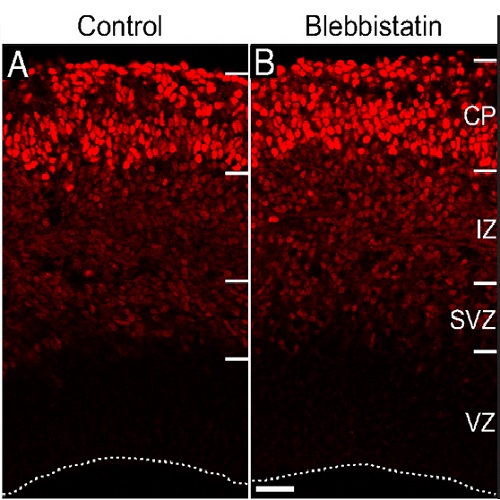Myosin II is required for interkinetic nuclear migration of neural progenitors.
Interkinetic nuclear migration (INM) is a hallmark of the polarized stem and progenitor cells in the ventricular zone (VZ) of the developing vertebrate CNS. INM is responsible for the pseudostratification of the VZ, a crucial aspect of brain evolution. The nuclear migration toward the apical centrosomes in G2 is thought to be a dynein-microtubule-based process. By contrast, the cytoskeletal machinery involved in the basally directed nuclear translocation away from the centrosome in G1 has been enigmatic. Studying the latter aspect of INM requires manipulation of the cytoskeleton without impairing mitosis and cytokinesis. To this end, we have established a culture system of mouse embryonic telencephalon that reproduces cortical development, and have applied it to explore a role of actomyosin in INM. Using the nonmuscle myosin II inhibitor blebbistatin at a low concentration at which neither cell cycle progression nor cytokinesis is impaired, we show that myosin II is required for the apical-to-basal (ap-->bl), ab-centrosomal INM. Myosin II activity is also necessary for the nuclear translocation during delamination of subventricular zone (SVZ) cells, a second, telencephalon-specific type of neural progenitor. Moreover, the inhibition of ab-centrosomal INM changes the balance between VZ and SVZ progenitor cell fate. Our data suggest a unifying concept in which the actomyosin contraction underlying ab-centrosomal INM sets the stage for the evolutionary increase in VZ pseudostratification and for SVZ progenitor delamination, a key process in cortical expansion.

- Proc. Natl. Acad. Sci. U.S.A. 2009 Sep 22;106(38):16487-92
- 2009
- Cell Biology
- 19805325
- PubMed
Enabled by:
